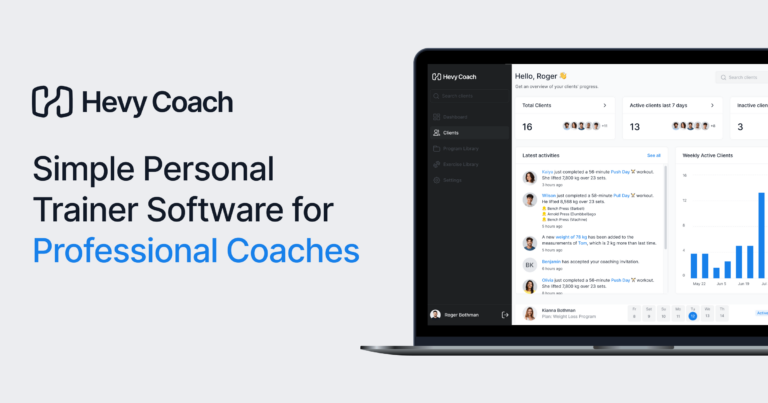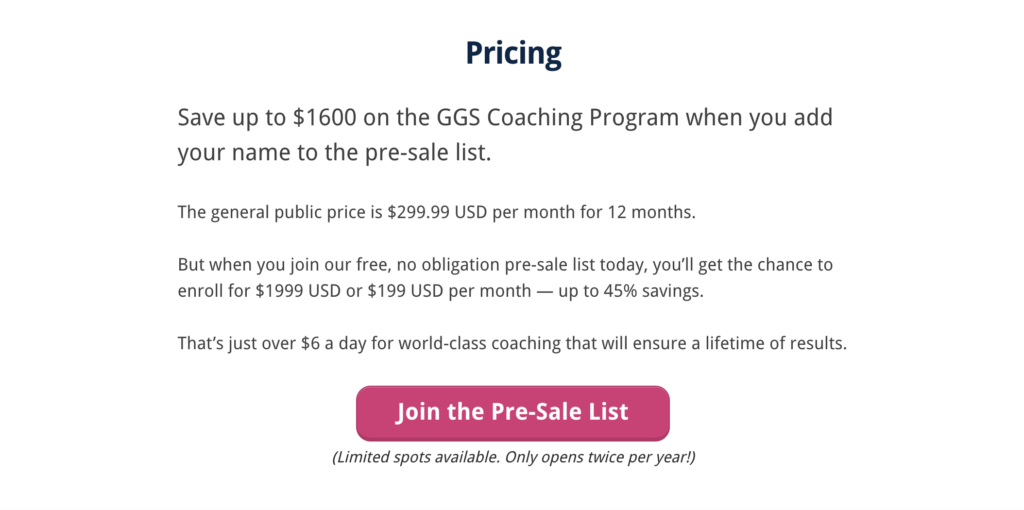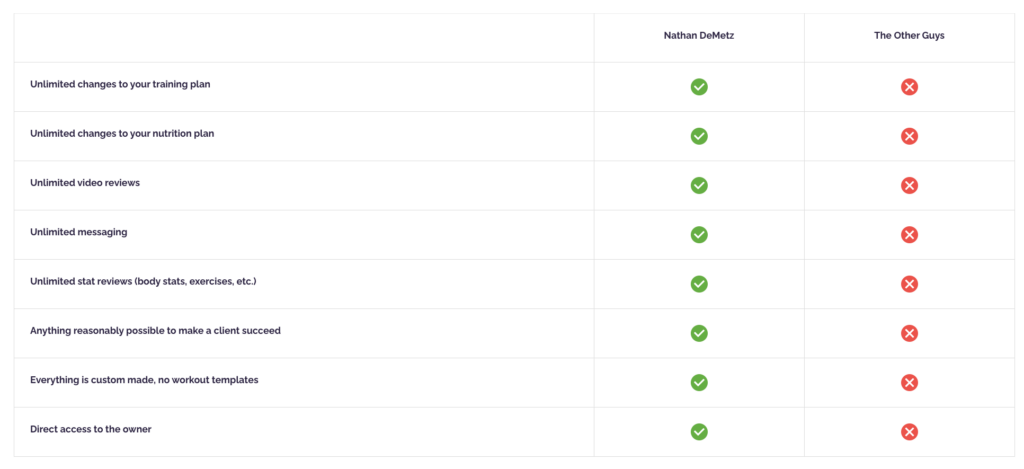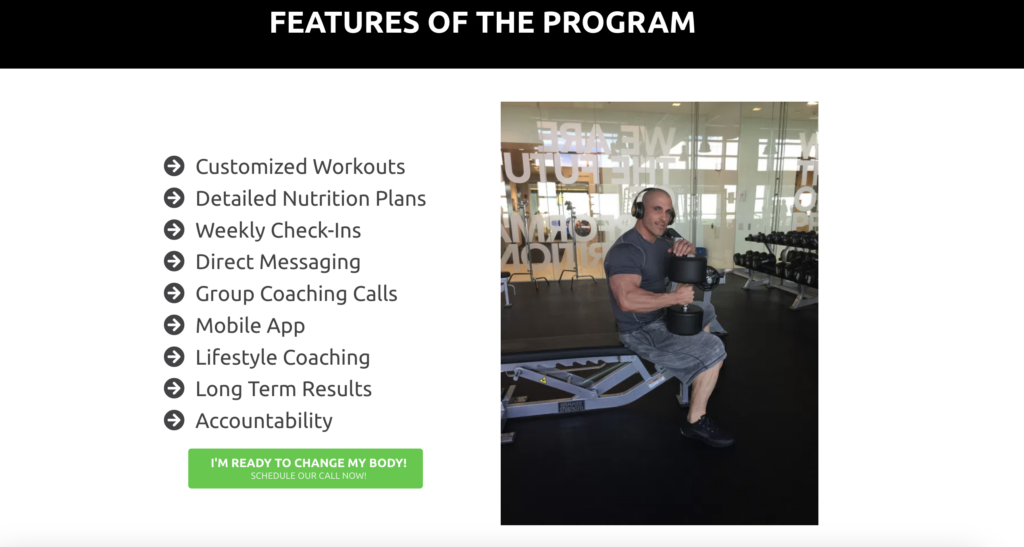Online personal training has become a true game-changer in the industry, with countless individuals opting for virtual coaching to reach their fitness goals.
The practice has transformed the traditional coaching model, making fitness more private, accessible, and personalized.
Technology has had a significant role in the online training revolution, as it has allowed coaches to easily communicate with clients and break down geographical barriers that often got in the way in the past.
Read on to learn what makes virtual training so great and how to develop the best online training packages to leave your clients delighted and coming back month after month.
How to Build Online Personal Training Packages
- Decide what you want to offer – virtual training, workout plans, etc.
- Consider how much time you can (and want to) dedicate to each client.
- Create your first package and set rules (e.g., how often to communicate with clients).
- Set a fair price that aligns with what your competitors offer.
- Adjust based on feedback.
What Online Personal Training Packages Are and Why They Matter
An online training package is a complete program that typically includes a workout plan, nutritional guidelines (or a meal plan), and progress tracking.
The various parts of the plan are designed to work together in harmony, delivering the comprehensive guidance clients need to reach their goals.
Trainers and coaches can deliver these packages in multiple formats, including PDF files, spreadsheets, videos, or plain Word files.
Hevy Coach, along with a simple solution (like shared spreadsheets on Google Drive) for nutritional guidance or meal plans tends to be the simplest option, allowing you to see how clients are doing in real-time and make adjustments when necessary.
The Key to Good Online Personal Training Programs
Personalization is the essence of any productive coach-client relationship. Just as a tailored suit fits far better than a generic one you pick up at the local store, so does a well-thought-out training and nutrition plan.
Good online personal trainers understand that each client has a unique situation. Age, stress levels, goals, available training equipment, workout preferences, schedule, and other factors determine the best approach for each person.
Because of that, you must take the time to consider who your ideal client is and what goals you would like to help them reach. Do you feel confident you can help clients build muscle? Or are you better equipped to help them lose weight?
There is no point in signing a client if you’re not 100 percent confident you can provide the best, personalized plan.
The Role of Technology in Delivering Online Personal Training Packages
Technology is undoubtedly essential for online personal trainers. It is like the bridge that connects clients and trainers, allowing quick and seamless communication at crucial times.
Nowadays, it’s common for trainers to work with clients from distant parts of the world and deliver the guidance necessary for success.
Take Andy Morgan from RippedBody as an example. He is arguably one of the most prominent and successful online coaches today and routinely works with people from Europe, the US, and other parts of the world. For reference, he lives in Japan.

Apps, coaching software, and communication channels like Skype, Zoom, and email are the tools online personal trainers use to stay in touch with clients, keep them accountable, and help them reach their goals.
For example, Hevy Coach is an all-in-one platform for personal trainers and coaches. It allows fitness professionals to write and deliver workout plans to clients, make adjustments when necessary, track progress, and much more. The best part? All of that happens from a single dashboard, and there is no need to jump from one browser tab to the next.
The neat thing about technology is that it allows effortless communication and the ability for the coach and client to recall details in their previous correspondence.
Instead of remembering every detail about your client from your interaction, you can look at previous emails or direct messages to get the necessary information. This becomes increasingly beneficial as your client roster grows, and it gets more difficult to keep all the details straight in your head.
The Building Blocks of a Successful Online Personal Training Package
Becoming a successful online personal trainer requires the right business model based on your expertise, coaching ability, and your client’s preferences. There are several approaches you can take:
- Selling workout plans
- Providing training and nutritional guidance
- Offering virtual coaching (where you guide clients through workouts)
- Training clients online and in-person (hybrid personal training)

Try Hevy Coach
Intuitive personal trainer software, with a world class experience for your clients.
30 day free trial, no credit card required
The more comprehensive and hands-on the coaching, the more you can charge. In contrast, a more automated approach, such as only selling workout plans with no additional guidance, takes less time and costs less for clients.
While a more automated approach might seem alluring, sustaining can also be more challenging. For one, clients can have a hard time applying the information effectively without ongoing guidance, motivation, and accountability. This can hurt recurring sales, putting you in a state of always having to replace old clients with new ones.
Second, you simply can’t charge as much, which would mean having to land more clients to earn a decent income.
A far better approach is focusing on personalization and guiding your clients every step of the way. That can also be somewhat automated and not take that much time.
For example, you could deliver your workout program, nutritional guidelines, and progress tracking requirements as spreadsheets, have your client fill them up, and check in with them once every week or two to review the numbers, answer their questions, and decide how to proceed.
Coaching your clients through each workout on video chat is the most time-consuming method, but it also pays the best. You can charge per session rather than selling a workout plan for $50-100 every four to eight weeks or charging for a monthly subscription.
A Strategic Approach to Pricing Your Personal Training Packages
Let’s first discuss some of the most critical factors you should consider when pricing your online training program:
- Personalization. How much time and effort do you put into creating training programs? Do you consider details like your client’s age, lifestyle, stress levels, nutrition, workout preferences, available equipment, etc.?
The more questions you ask your clients to understand their situation and provide a better training experience, the more you can charge them. - Communication. How often do you communicate with your clients? Weekly, bi-weekly, once a month? Or perhaps you’re available every day to answer questions and help them overcome roadblocks?
- Guidance. How many things are you helping your clients with? Do you only provide a training program or also create meal plans and help them improve their habits?
Experimenting with tier pricing to see which of your packages sells best might be beneficial. For example, your basic package would cost the least and include a strength training program and some basic nutritional guidance.
Your two more expensive packages can include bi-weekly calls, MyFitnessPal data analysis, technique review (examining their form on video), healthy recipe suggestions, meal plans, etc. - Time commitment. Similarly to the previous point, how much time you have to invest in a client will directly impact the cost of your package. For example, if one client is low maintenance and does great with a single check-in every one to two weeks, you could charge less.
In contrast, clients who demand your attention every day or two, ask countless questions and require in-depth guidance and explanation would have to pay extra. - Expertise and reputation. How well-known are you in the industry? Do you have any flashy credentials or degrees related to exercise science? Are you an experienced personal trainer with a proven track record, now looking to transition online?
While credentials or a degree from a respected university doesn’t mean someone is a good coach or can guide clients to their goals, it helps establish credibility and pique potential clients’ interest. - Competition. Working online provides a unique opportunity to coach people worldwide, which can be particularly valuable for trainers living in rural areas.
That said, you must still consider what your competition is doing and how much their packages cost. If the average online personal training program costs $100 and you want to charge $200, you must justify it. What additional benefits would clients get if they worked with you, and how are you a better coach than your direct competition?
These things can be challenging to figure out, but making an effort can set you apart from others and put you in a better position to establish a successful fitness business.
Related article: How to Start an Online Personal Trainer Business: A Complete Guide
Before We Move On
There is no ‘one-size-fits-all’ strategy that works great for everyone. It’s up to you to determine what kind of service you want to provide, what you’d like your packages to include, and how much you’d like to help each client.
Once you’ve decided these things, see what your competition is doing, consider your level of expertise and knowledge, and set an initial price.
There is nothing wrong with experimenting with your pricing to see what converts better and keeps clients working with you longer. It could be more or less than what you think, but you can’t be 100 percent sure until you do some testing with enough clients.
The bottom line is that you must find a way to balance value and affordability. The ideal situation is for your clients to feel like they are getting excellent coaching at a steal of a price.
Speaking of value, check out Hevy Coach, our all-in-one platform for personal trainers and coaches. Create routines for your clients, make adjustments when necessary, keep track of their progress, and answer their questions––all from a single dashboard.
Online Personal Trainer Examples (See What Others Are Doing)
1. Girls Gone Strong
Girls Gone Strong is a brand dedicated to helping women with their health and fitness. Their online coaching includes nutrition, exercise, and mindset guidance to help women get fit and healthy, feel better, and carry themselves with confidence.
Their offer is somewhat unique. First, there is a pre-sale list, which means people cannot sign up for coaching whenever they feel like it. They must do so during a specific period twice a year.
The coaching package costs $299 monthly for 12 months, but people who sign up for the pre-sale list get a chance to enroll for $1999 ($199 per month), which is a 45 percent discount.

2. Ripped Body
In contrast to Girls Gone Strong, Ripped Body offers online coaching exclusively for men. The brand’s founder, Andy Morgan, reasons, “I’ve been coaching men for so long now that I don’t really know anything about coaching women. And it would be wrong of me to offer a sub-par service when there are other great coaches out there who have spent years honing their craft that I can refer out to.”
Andy doesn’t outright disclose the cost of his coaching services, but I see that he requires a minimum three-month commitment to sign a new client. His reason is that anything less wouldn’t be enough time for clients to see significant changes, which could affect overall satisfaction.
One thing that sets this brand apart from many others is that Andy refuses only to help clients with their training or nutrition. Instead, he emphasizes the importance of both when pursuing long-term fitness goals.
3. Nathan Demetz
Next up, we have Nathan Demetz’s online personal training. He uses a chart to promote his services and compare them to those of his competition:

Some of the perks he offers include unlimited workout and nutrition plan revisions, unlimited messaging, entirely customized plans (no use of workout templates), and more.
Because of the hands-on approach, clients receive all the guidance they need to make good progress. While that is more time-consuming for Nathan, he can charge more for his services.
Nathan hasn’t disclosed the cost of his services on his landing page. He first wants prospective clients to reach out through a form. The tactic is somewhat common in the coaching industry, as it gets people to buy in before spending money. That can improve conversion rates and client loyalty.
4. Tobias Young
Tobias Young is another prominent online coach. He used to offer several packages, ranging from $97 to $399 per month. His basic package included:
- Workout plan with monthly progression
- Nutritional plan
- Exercise instructions (video)
- Healthy recipe ideas
- Habits Coaching
- Fitness tips
His most expensive package included these perks plus:
- By-weekly instead of monthly progression
- Adjustments to the nutritional plan
This is another example of how a more hands-on approach costs more because it takes more time.
However, since then, Tobias has merged his training packages into a single one:

Like other trainers, he doesn’t disclose the cost of his services but instead encourages people to reach out and book a discovery call. Doing so is an effective way to weed out those who aren’t serious enough.
5. Ultimate Performance
Ultimate Performance is another brand with an excellent online coaching track record. Unlike some coaches who tier their packages based on value, UP offers three options based on commitment.
The one-month option costs the most: $449; the three-month package costs $886; the six-month one costs $1475. This is a fantastic way to get clients to commit for more extended periods and hopefully see better results.
Why pay $449 for a single month when you can pay $437 more and get two extra months of coaching? Better yet, people serious about making a change can opt for the six-month plan, which costs $245.80 each month.

6. Forge PT
Last but not least, we have Forge PT––another brand that offers proper online coaching and leverages tier pricing.
Unlike some of its competitors, Forge PT discloses the cost of each package, making it easy for people to tell if they can afford the service right away. Their plans are as follows:
- Standard – $125/month; workout and meal plan with one monthly call
- Complete – $175/month; workout and meal plan with two monthly calls
- Premium – $225/month; workout and meal plan with a weekly call
As you can see, these are pretty standard and are priced based on the value they provide. In this case, more frequent calls with the coach mean a higher price.

Conclusion
Deciding how to structure and price your online personal training packages can be frustrating and time-consuming, even if you have experience with in-person training.
There are plenty of details to consider, including your credibility and expertise, how much guidance you’d like to offer clients, how willing they are to commit for multiple months, what your competition is doing, and more.
That said, breaking it down into individual steps makes the process easier. Carefully consider how hands-on you’d like your coaching to be, put together your first package, and select a price you feel would balance value and affordability.
Promote your service and see how people receive it. You can always adjust the price later.
Before you go:
Check out Hevy Coach––our all-in-one platform for personal trainers and coaches. It streamlines the online coaching process, making it easy to create routines for your clients, track their progress, and answer their questions, all from a single dashboard. Test it for free with up to three clients.

Try Hevy Coach
Intuitive personal trainer software, with a world class experience for your clients.
30 day free trial, no credit card required
FAQs
1. What are good ways to coach people online?
The simpler the approach is, the better. Coaching should occur as seamlessly as possible for yourself and your clients. If it’s too confusing or time-consuming, your clients could get frustrated and give up.
2. How much should online coaching cost?
The cost of online coaching depends on various factors like the trainer’s experience and expertise, how much time they dedicate to the client, how comprehensive the training and nutrition plans are, and the competition’s pricing.




